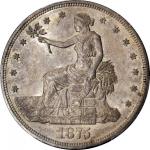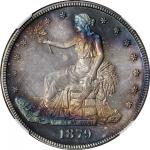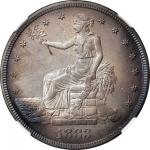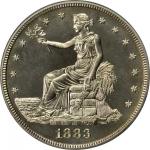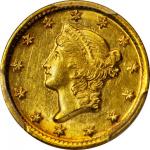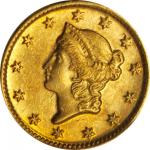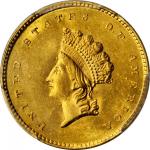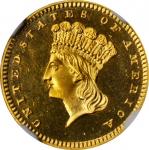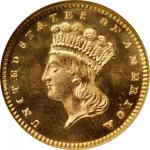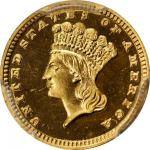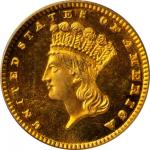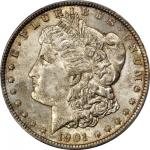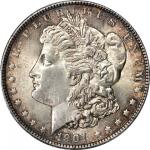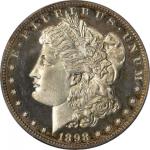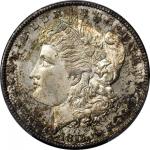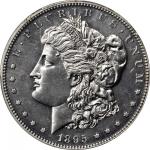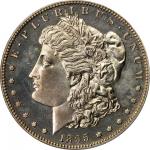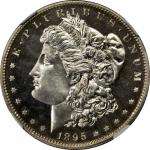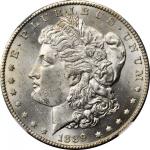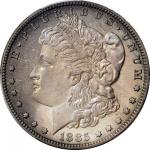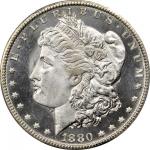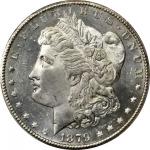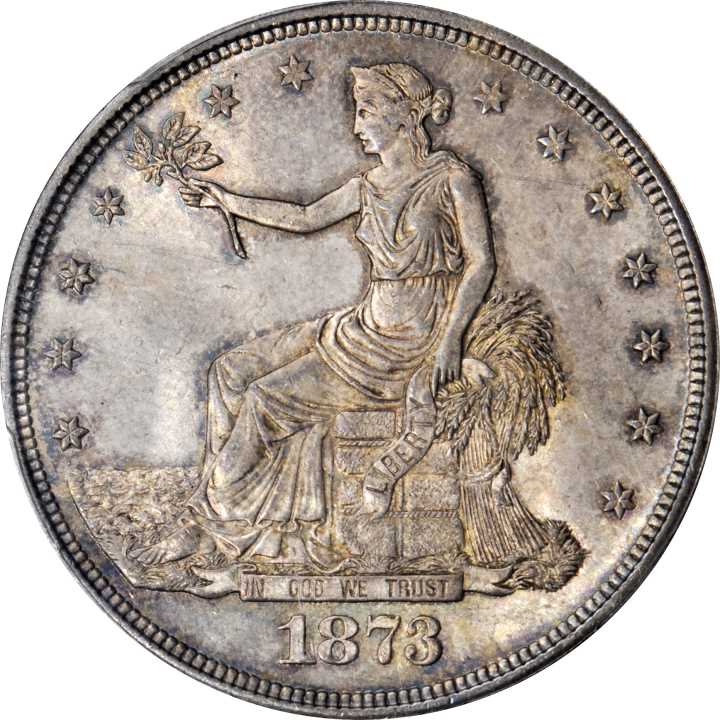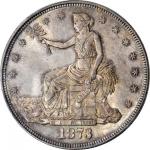A wonderfully original Gem with overall pinkish-gray patina and more vivid charcoal-russet outlines to most of the devices. Soft satin luster is vibrant over both sides and the devices are sharply rendered for virtually all features. Thoroughly appealing and well preserved for this underrated first year trade dollar.The United States trade dollar made its debut in 1873 with circulation strike coinage continuing through 1878. Authorized by the Act of February 12, 1873, which also abolished the standard silver dollar, the trade dollar had its genesis in the 1850s with growing commercial ties between merchants in the United States and the burgeoning ports and cities in the Orient, especially China. During the late 19th century Oriental merchants preferred to conduct business using silver coins, the favored medium of exchange being Spanish-American 8 reales that had long been popular in the international market. In order to acquire these coins for overseas commerce, however, American merchants had to pay a premium, and calls were soon heard for a domestically produced silver coin. The only one of the United States Mints contemporary coins that came close to filling this bill was the Liberty Seated silver dollar, examples of which were used in trade with the Orient from time to time during the late 1850s, 1860s and early 1870s. As a whole, however, these coins were unsuitable for commerce with the Orient, at least partly because yearly mintages were limited to the point where there were simply not enough Liberty Seated dollars to meet demand. The trade dollar replaced the silver dollar in 1873 with the specific purpose of meeting the needs of commerce with the Orient. Indeed, the new denomination was authorized at a weight standard of 420 grains, greater than the 412.5-grain silver dollar to make the trade dollar more attractive in the eyes of Oriental merchants. Yearly mintages were also much higher than those of the Liberty Seated dollar, especially at those coinage facilities closest to the ports of embarkation for the Orient (the Carson City and, especially, San Francisco mints). The trade dollar became an instant success in its intended role.Situated far from the ports on the West Coast, the Philadelphia Mint contributed comparatively little to circulation strike trade dollar production, at least apart from an isolated delivery of 3,039,200 pieces in 1877. A mintage of 396,635 pieces for the first year 1873 is more in line with the norm for this Philadelphia Mint series. Despite the greater distances involved, this issue was largely exported to the Orient alongside the 1873-CC and 1873-S and survivors are scarce to rare in all grades. In fact, the 1873 is the rarest Philadelphia Mint trade dollar after only the low mintage 1875. Clearly there was little contemporary interest in setting aside examples of a coin that was intended for export -- a curious state of affairs since most first year issues in U.S. coinage history were widely saved by the public. What little numismatic demand there was for the trade dollar at the time was largely met by yearly Proof coinage. Surviving with exceptionally well preserved Gem surfaces, the present example is a condition rarity that would serve with distinction in the finest cabinet.,,PCGS# 7031. NGC ID: 252W.,PCGS Population: 10; 6 finer (MS-67 finest).,

